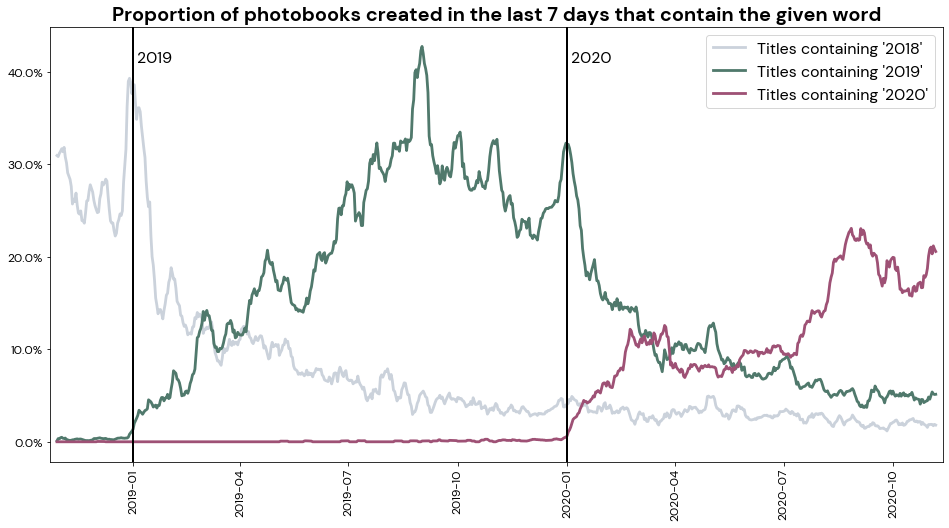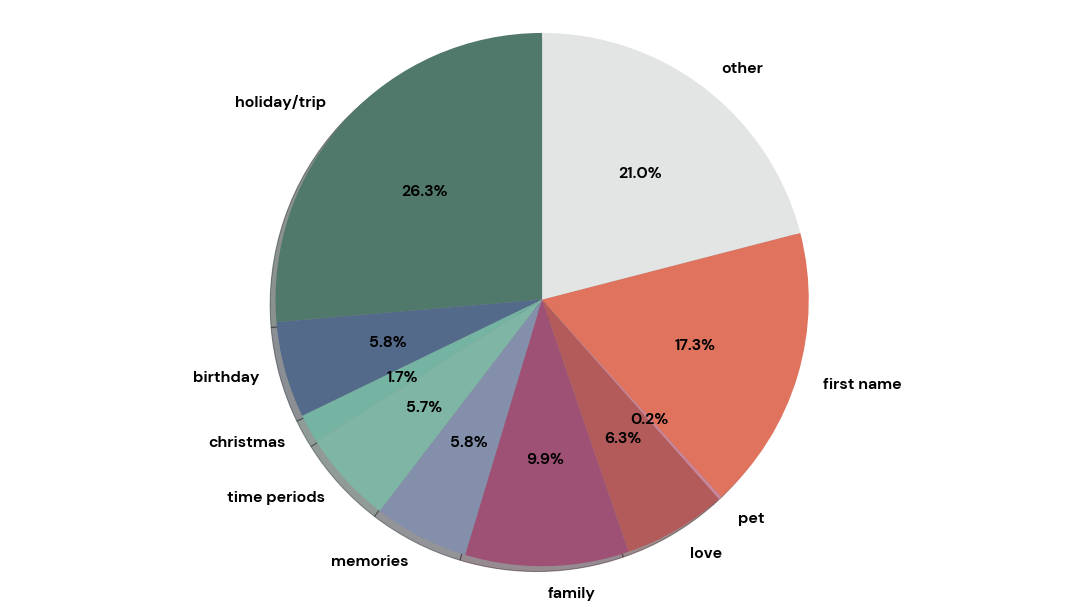Add Public Holidays From Around The World to Your Popsa Calendar
New for 2021 — Make your Popsa calendar more personal than ever; add the public events that matter most to you.
Read more
At Popsa, we are committed to creating the best possible experience for our users, helping them bring their memories to life with more ease than ever before. Whether this be through new products such as calendars, detailed features like our 3D AR preview, or technologies that remove manual steps such as our printAI algorithm.
So many of our significant moments are buried in amongst thousands of other photos - alongside screenshots and receipts. As a Data Science team, there are many ways in which we can contribute to helping you access the most important ones. For example grouping together your favourite memories, surfacing photos of your friends and family or even improving the resolution of bad quality photos (such as those sent across WhatsApp).
One of the big pain points we hear from our users is that they know they want to create a photobook, but they just don’t know what to call it. So one particular feature we’re very excited to introduce is title suggestion. By suggesting meaningful and creative titles to a user we can make creating photobooks easier than ever.
We have two goals for this feature:
Predict the title that a user is most likely to use today. This makes the photobook creation process easier than ever, allowing them to quickly move on to editing their book without getting stopped at the first hurdle by writers’ block.
Provide more relevant, insightful and creative titles that enhance the product they are creating. A more interesting or provocative photobook title can really bring people’s memories to life by creating intrigue as to the contents inside.
Let’s look at that first goal...
Not a lot to start with. Popsa is a privacy-focused company and therefore the Data Science team does not have unrestricted access to our customer’s photos.
At the point in the journey we’re suggesting a title, the user has logged on, selected a product and chosen a subset of their photo library of which to print.
Although there aren’t many steps here, there is a lot of information that we can use to return suggestions that might be valuable to our users.
At face value, it would seem that the date on which a photobook is created would provide little insight into the intent behind the print. However, if we look into the data we can see clear trends amongst our users.
The following graphs show 7-day rolling averages of the percentage of photobooks being created.
One of the most popular ways for users to title their books is to mark it with a year. A holiday to France in 2019 can quite often be titled “France 2019”. Or sometimes a book may just be memories of 2018 and therefore be titled as such.

If we take a moment to look at the green line above: this shows the percentage of photobooks created in the preceding 7 days, that have a title containing “2019”. On the left hand side of graph we can see very few photobooks being made with “2019” in the title - which makes sense as here we are still in 2018. As 2019 starts we see the proportion of photobooks containing “2019” in the title increase. This reaches a peak just after the summer, driven by a lot of holiday photobooks, before decreasing through to the end of the year. We see one final peak at the end of 2019, with people reflecting on their year. Finally, as we move into 2020, “2019” photobooks decrease and “2020” photobooks, shown by the red line, start to increase.
This is a very simple example, and doesn’t yield anything likely to substantially improve user experience. However, we can apply the same analysis across more niche titles.
Two events very well suited for Popsa products are Mother’s Day and Father’s Day.

By analysing the titles of our photobooks in the UK we can clearly see where Mother’s Day and Father’s Day fall. Let’s focus on Mother’s day (green line) here.
Each year, as Mother’s day approaches, we start to see an increase in the proportion of books being created with “Mother” in the title. This peaks around 5 days before Mother’s day before falling sharply back down to 0 until a similar rise following year. We can see the exact same trend for Father’s day, except not as pronounced. It’s possible this suggests that people are much more likely to buy a photobook for their mother than they are for their father.
Finally, and this is the most exciting trend, we can look at something even more niche. Something that has never happened before, and will hopefully never happen again - a lockdown.

I’ve shown the “lockdown” trend here against a “summer” trend. We see that before March 2020, nobody had ever created a photobook to document their lockdown memories (and why would they?). As we move into lockdown, we start to see a significant proportion of our users documenting their lockdown memories as photobooks.
Although simple, these trends give us a starting point as to the intent of one of our users creating a photobook - using only the time of creation.
As you can imagine, suggesting unique titles, tailored to photo content is very difficult. At Popsa, we deal with individual, special, memories. Even if two customers create a photobook titled “Mother’s day”, their content would be completely different.
With this in mind, we created an approximate categorisation of the photobooks that have been created with Popsa over the past two years.

For example, we can categorise holiday/trip photobooks by cross-referencing titles with a large list of cities and countries. We see that 26.3% of the photobooks created with Popsa are made to document some sort of holiday or trip. And many of these follow the convention of “{place} - {year}” e.g. “Paris 2019”.
We can do a similar categorization with first names. Using a corpus of common first names, we can group any photobooks that have a title containing a first name. We can see that a large proportion of photobooks sit in this category - with people creating photobooks for or about someone.
The other categories were all curated by using a list of related keywords - christmas being “Xmas”, “Santa” and of course “Christmas”. By doing this rough analysis we are able to drill down on the areas of most importance for our users, what topics are being printed the most. In this case we see holiday books or individualistic books related to people are the most common. Users are documenting memories of places they’ve been or people they’re with. We can start to tailor our title suggestion feature to focus on these most popular areas and create a plan to start building out these suggestions until we can cover the vast majority of different book types.
We have a first version of our title suggestion feature - which focuses on the areas above - almost ready for release. By starting with basic analysis, we are able to truly understand the problem, and more importantly, our customers.
As we start to develop this feature, we will be using cutting edge machine learning techniques, so that we can provide our users with not only correct titles, but creative and inspiring ones too.
Watch this space.